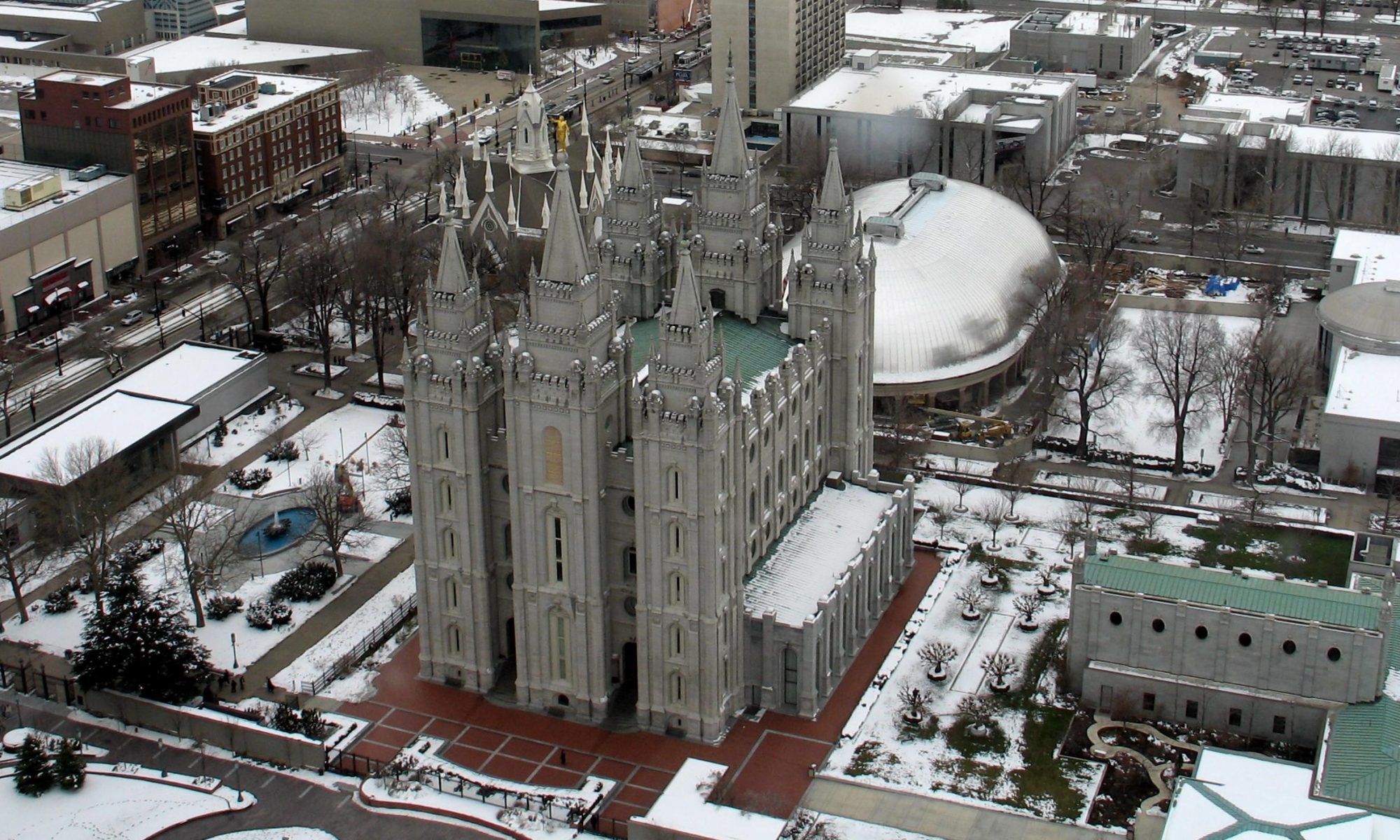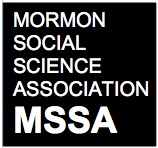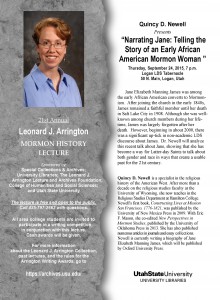The next speaker in the Arrington Lecture Series at Utah State University will be Walter B. Rudolph, the program director of KBYU-FM. The lecture is September 28th, 2017, at 7:00 pm in the Logan LDS Tabernacle. Announcement is available here.
21st Annual Arrington Lecture
Please see this PDF and the flyer below (click for full-size) for more information on the 21st Annual Arrington Lecture.
A House Full of Females: Faith and Family in Nineteenth-Century Mormon Diaries – Glenn Vernon Lecture at SSSR 2013
If you need another reason to attend the 2013 Society for the Scientific Study of Religion meetings in Boston, where the MSSA also meets, attending the Glenn Vernon Lecture is a pretty good one. The Glenn Vernon Lecture will be given by Laurel Thatcher Ulrich, the Pulitzer-prize winning author and Harvard scholar. Her lecture is titled, “A House Full of Females: Faith and Family in Nineteenth-Century Mormon Diaries.” It promises to be an excellent presentation.
Case study on Young Single Adult Ward in Utah available
Working with the Faith Communities Today, a case study was recently published that details the inner workings of a Young Single Adult Ward in Herriman, UT. You can download the report here.
Leonard J. Arrington lecture – September 19th – Gregory A. Prince
The latest Leonard J. Arrington lecture by Gregory A. Prince has been announced. See the full announcement here.
Annual Leonard J. Arrington Mormon History Lecture – Richard V. Francaviglia
Sponsored by:
Special Collections & Archives; Merrill-Cazier Library; The Leonard J. Arrington Lecture and Archives Foundation; College of Humanities and Social Sciences; and Utah State University
The lecture is free and open to the public. Call 435-797-2663 with questions.
Dr. Richard V. Francaviglia presents:
“’Like the Hajis of Meccah and Jerusalem’ — Orientalism and the Mormon Experience”
Throughout their history, the Latter-day Saints have been compared to peoples of the Middle East, a region that was also called the “Near East” and sometimes simply “the Orient” in the 1800s. Like many Americans in the early 1800s, the Mormons were well aware of — and fascinated by — the Orient. In the 1830s, Mormon prophet Joseph Smith purchased ancient Egyptian hieroglyphics and translated them into the Book of Abraham. Because Smith became a prophet in post-Biblical times, he was often compared to Islam’s prophet Mohammed. The Mormons’ belief that they were the true Israelites further linked their new American faith to the ancient Near East. So, too, did the Mormons’ interpretation of Native Americans as “Lamanites” (or Lost Tribes of Israel). The Mormon belief that repositioned important Biblical locations onto American soil (for example, the Garden of Eden) was also a factor. Within a few years of the Mormons’ 1847 arrival in the Valley of the Great Salt Lake, Utah was popularly considered the New Zion or New Jerusalem. As Mormon historian Leonard Arrington noted, Brigham Young was portrayed as the “American Moses” who had led the Mormon “Exodus” to this new Promised Land. Associating the Mormons with the Orient was controversial and lasted a long time. It provided ammunition to those who argued that Mormons were strange or even dangerous, and yet it also helped generate interest in the Mormon faith. The process was mutual, for the Mormons were not only given an Oriental identity by others, but willingly adopted it themselves. Using a wide range of sources, this presentation explores how and why the Latter-day Saints were “Orientalized” to become a distinctive and exotic people on the American frontier.
Dr. Francaviglia is a historian and geographer interested in how cultural attitudes shape the American West. Among his ten books are three — The Mormon Landscape (1979), Believing in Place (2003), and Go East, Young Man: Imagining the American West as the Orient (2011) — that address the important role played by religion. Although he is Professor Emeritus (University of Texas at Arlington), he now lives in Salem, Oregon, where he actively conducts research for his consulting company (Geo-Graphic Designs) and recently began teaching courses in Religious Studies at Willamette University. All college students are invited to participate in a writing competition in conjunction with this lecture. Cash awards will be given.
Location:
Thursday, September 15, 2011, at 7 pm
Logan LDS Institute Cultural Center
600 Darwin Avenue
Logan, Utah
Free parking tokens for the Aggie Terrace Parking Garage will be made available for those who attend.
16th Annual Leonard J. Arrington Mormon History Lecture
Sixteenth Annual Leonard J. Arrington Mormon History Lecture
Sponsored by:
Special Collections & Archives; Merrill-Cazier Library; The Leonard J. Arrington Lecture and Archives Foundation; College of Humanities and Social Sciences; and Utah State University
The lecture is free and open to the public. Call 435-797-2663 with questions.
Susan Arrington Madsen and Carl Arrington Present
“A Paper Mountain: The Extraordinary Diary of Leonard James Arrington”
The people of the Great Basin Kingdom are not often likely to witness a scholar, father, friend, mentor and Latter-day Saint of the stature of Leonard James Arrington. Along the way, Leonard Arrington was writing about all of these experiences in a diary—a diary that would eventually occupy 26 linear feet on the shelf at USU Special Collections. The record includes some 60,000 pages – roughly two pages per day for all of his eighty-three years until his death in 1999. The diary reveals in gritty detail not just his adventures as a church historian, but the history of many Cache Valley characters. It also provides a treasure-trove of information on his personal trials, triumphs, and disappointments, along with his joys as a friend, father, and scholar. This presentation provides a sampler of stories, hidden deeds, private opinions about public controversies, and insights into a man who was hailed variously as a genius, a dangerous menace, a valiant friend, and a wise father.
Susan Arrington Madsen grew up in Logan where she graduated from Utah State University with a degree in journalism. During her years at USU, she was awarded an internship with the LDS Church Magazines, wrote for the USU student newspaper as a senior staff writer, and wrote more than 40 articles for Collier’s Encyclopedia Yearbooks. Susan currently lives in Hyde Park, Utah.
Carl Arrington, the second son (middle child) of Leonard and Grace Arrington, was born in Logan, Utah, in 1951. He grew up in Cache Valley attending Adams Elementary, Logan Junior High, Logan High, and Utah State University. Carl currently works as a freelance writer and media consultant. He lives in New York City.
All college students are invited to participate in a writing competition in conjunction with this lecture. Cash awards will be given.
Location:
Thursday, September 23, 2010, at 7 pm
Logan LDS Tabernacle
50 N. Main, Logan, Utah
Linda Sillitoe passes away
Peggy Fletcher Stack has a nice memorial piece to her in the SL Tribune. While not a social scientist, I do think her volume detailing Mark Hofman’s forgeries was a noteworthy contribution to Mormon Studies generally.
Research Analyst Positions for LDS Church
The Church of Jesus Christ of Latter-day Saints has two job openings for social scientists in their research division. Please see the attached letter and job description for these job postings.
MSSA visits BCC
Michael McBride arranged for a panel of MSSA members to answer questions on By Common Consent, one of the most widely read Mormon-oriented blogs. You can see the first part of this discussion here.


